March 2021 Edition
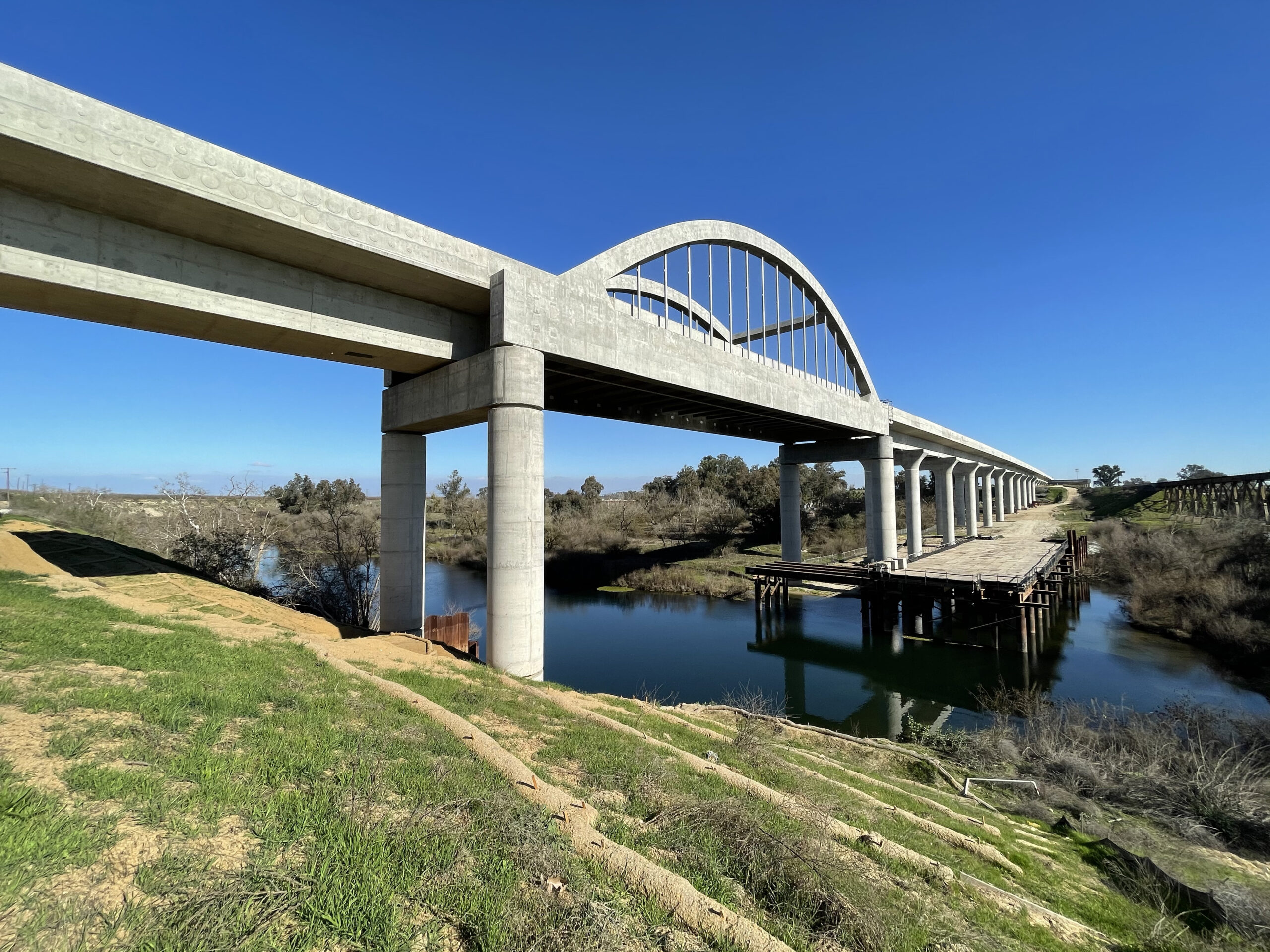
The San Joaquin River Viaduct and Pergola structure spans approximately 4,741-feet long collectively, with the top of the viaduct spanning 43-feet wide. The 210-foot arch span over the San Joaquin River is supported by 20 pre-cast floor beams. Technically, the cast-in-place arches act as suspension bridge support for the bridge deck.
Further south of the San Joaquin River, a large pergola structure was built to allow high-speed trains to cross over the Union Pacific Railroad. A total of 198 girders form the foundation of the lid of the pergola structure. Each girder weighs 156,000 lbs. and is 121-feet long.
Updates Per Project
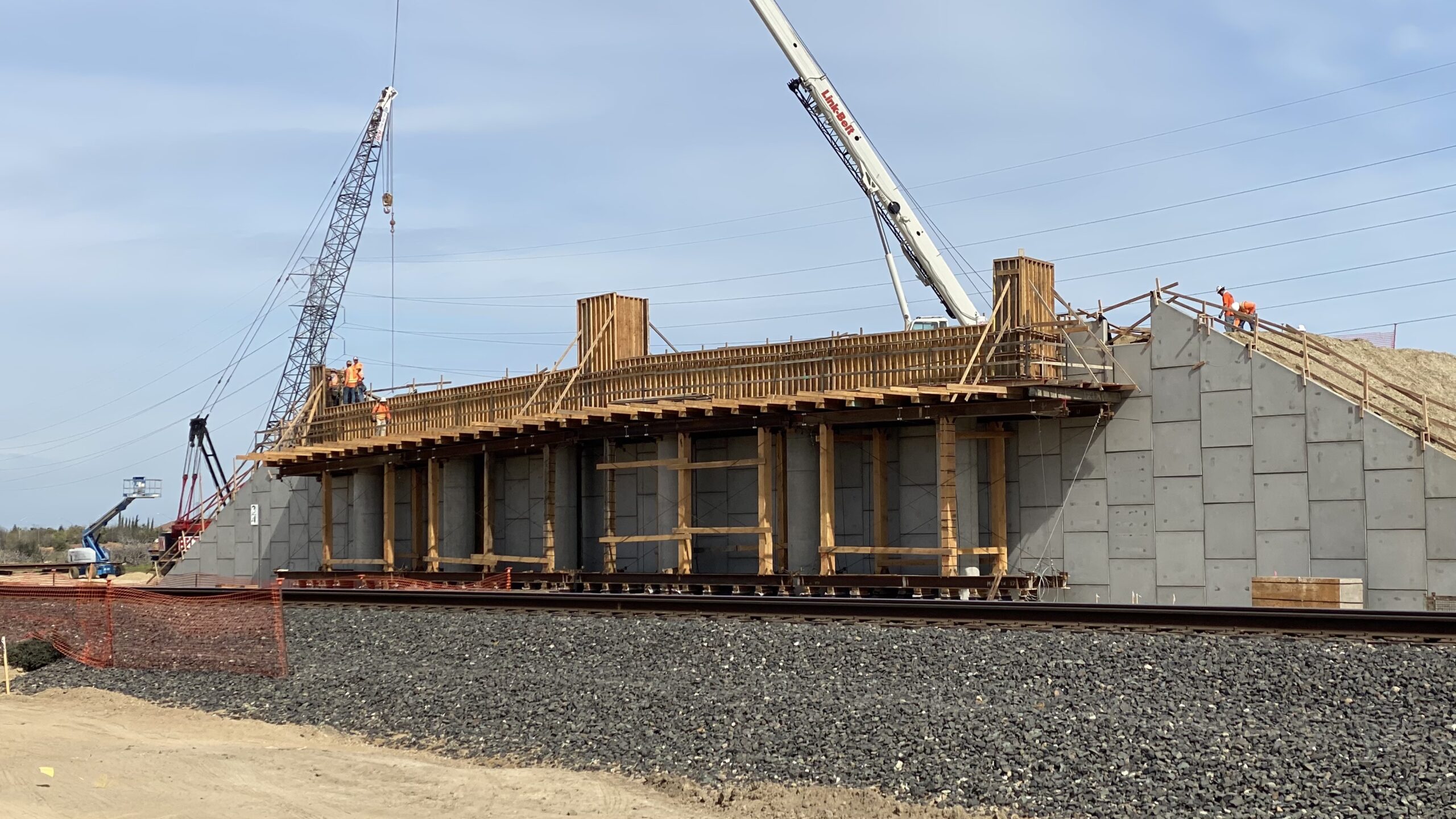
CP 1: Veterans Boulevard Project
In north Fresno, crews are hard at work at Veterans and Golden State Boulevard part of the second phase of the City of Fresno’s Veterans Boulevard Interchange and Corridor Improvement Project.
On both sides of Golden State Boulevard, crews have completed pile driving and column work for the substructure of the grade separation. Crews also completed work on the mechanically-stabilized earth (MSE) walls and are now working on the abutment caps and bent caps. Crews have also begun installing the falsework for the superstructure.
When complete, the Veterans Boulevard Project will include a grade separation taking traffic over the Union Pacific Railroad, Golden State Boulevard and future high-speed rail lines. The structure will include two spans and will be more than 294-feet long and 132-feet wide.
This City of Fresno improvement project is partially funded by the California High-Speed Rail Authority.
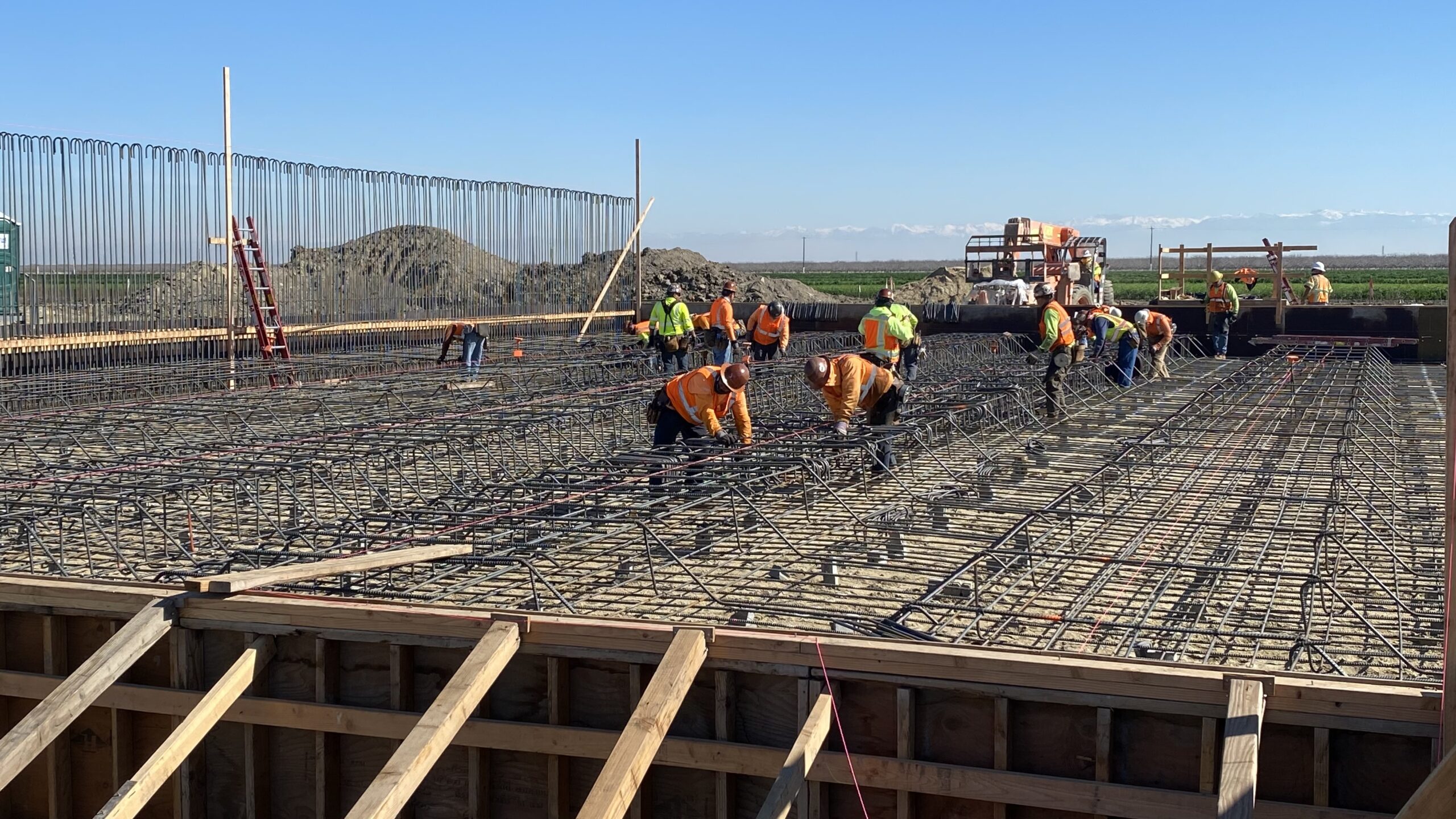
CP 2-3: Tule River Viaduct
At the Avenue 144/Tule River Viaduct (pictured in rendering) in Tulare County, crews from Martinez Steel are tying rebar for a multi-cell reinforced box culvert, a structure that will allow water and wildlife to cross below the high-speed rail alignment. More than 800 cubic-yards of concrete will be placed for the base of the culvert. When completed, the culvert will be more than 12-feet high, 112-feet wide, and 101-feet long.
To the south, crews have begun paving for what will be the temporary State Route 43. In the near future, the highway will be shifted to the east to allow for construction of the future viaduct.
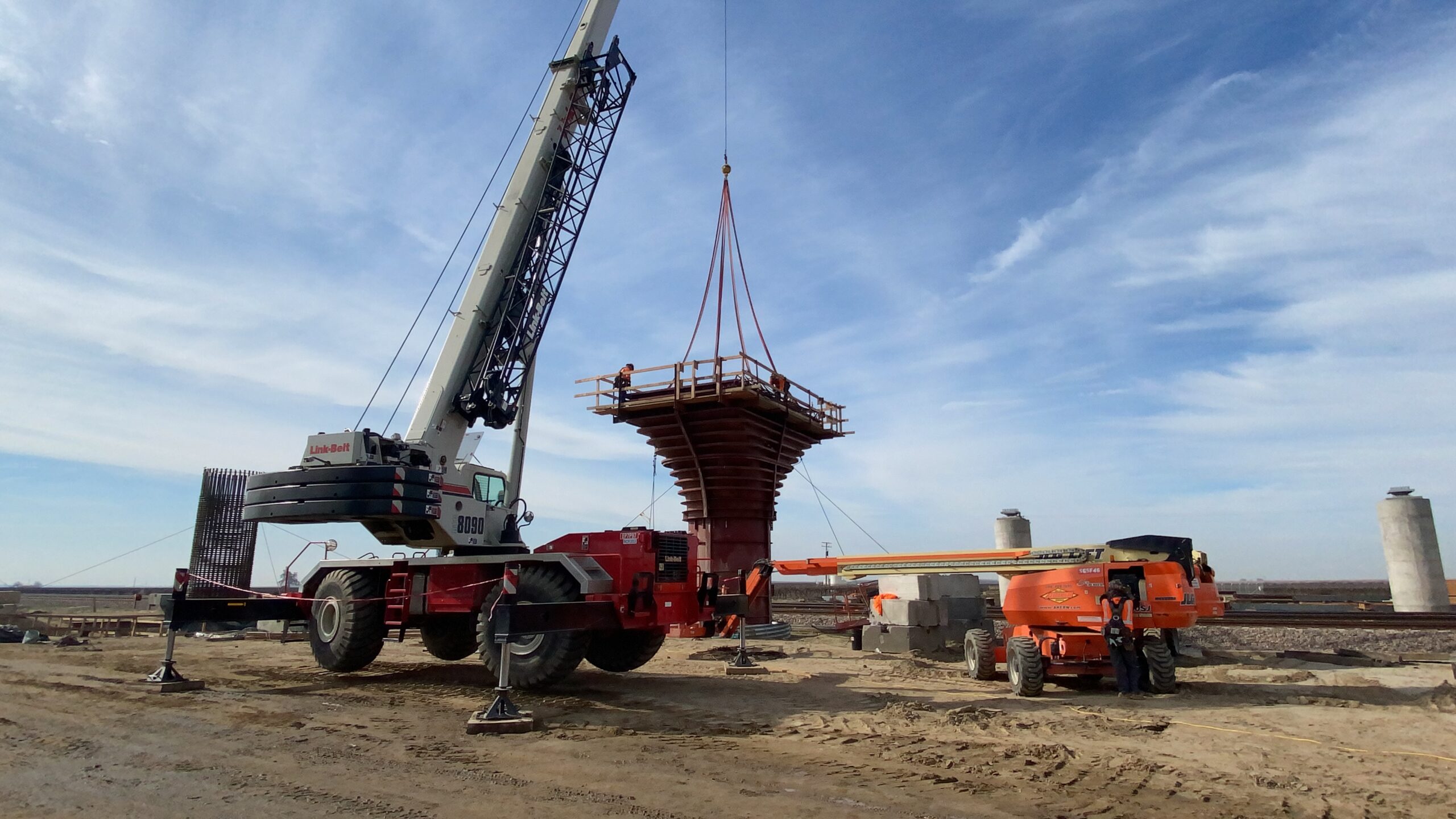
CP 2-3: Conejo Viaduct
At the northern portion of the Conejo Viaduct in Fresno County, crews continue to place concrete to form the bents and columns of the substructure. To the south, crews continue to erect the column flares, the portion of the column that supports the superstructure. When complete, the 2,000-foot Conejo Viaduct will carry high-speed trains over the BNSF rail line, Conejo and Peach avenues.
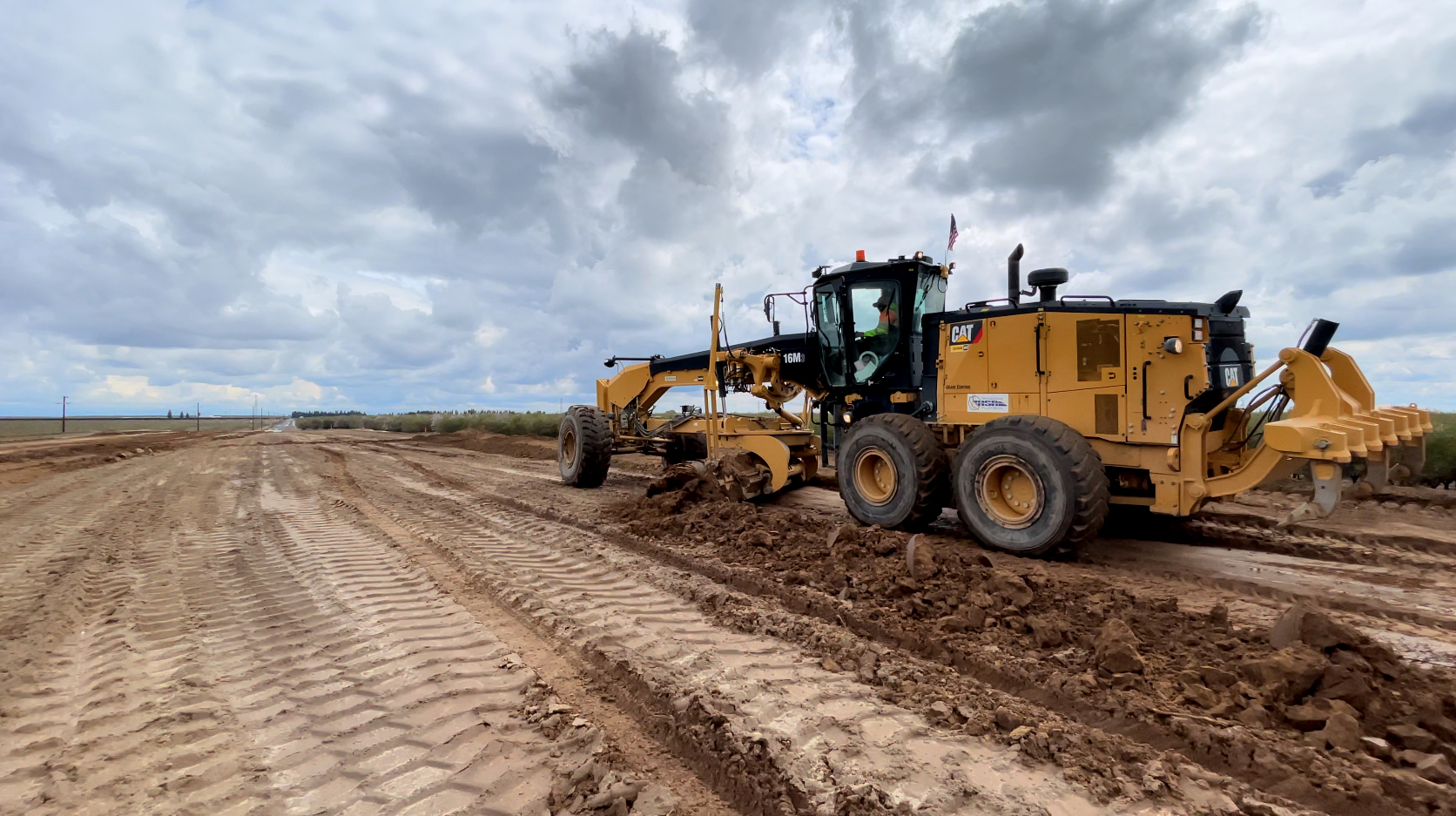
CP 2-3: Dover Grade Separation
In February, crews broke ground at the Dover Avenue Overcrossing in Kings County. Currently, crews are hauling roughly 800-900 truckloads of dirt each day to form the slopes of the future overcrossing and grade separation. When complete, the overcrossing will take traffic over the future high-speed rail lines and will span 2,816-feet long and 870-feet wide.

CP 2-3: Mountain View Grade Separation
At Mountain View Avenue in Fresno County, crews are working on reconstructing and relocating the Elkhorn Ditch with the installation of a pre-cast box culvert. The future grade separation will take traffic over the BNSF and the future high-speed rail lines.
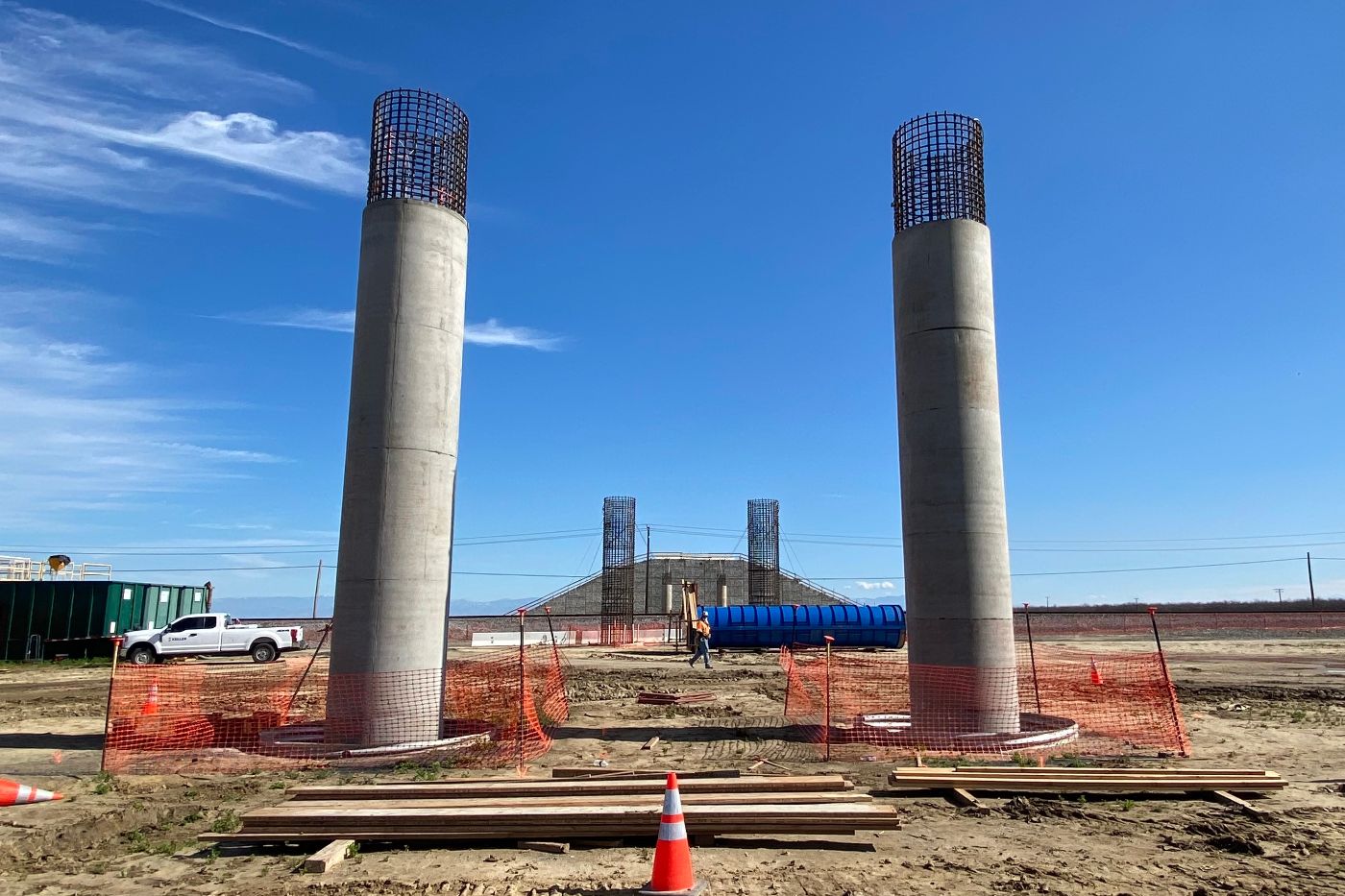
CP 4: McCombs Avenue Grade Separation
At McCombs Avenue, crews have poured four of the eight columns for the substructure of the McCombs Grade Separation. Crews continue to work on the west side of the BNSF tracks to prepare the forms and rebar to continue to pour future columns. When complete, the McCombs Avenue Grade Separation will take traffic over the BNSF and future high-speed rail lines.
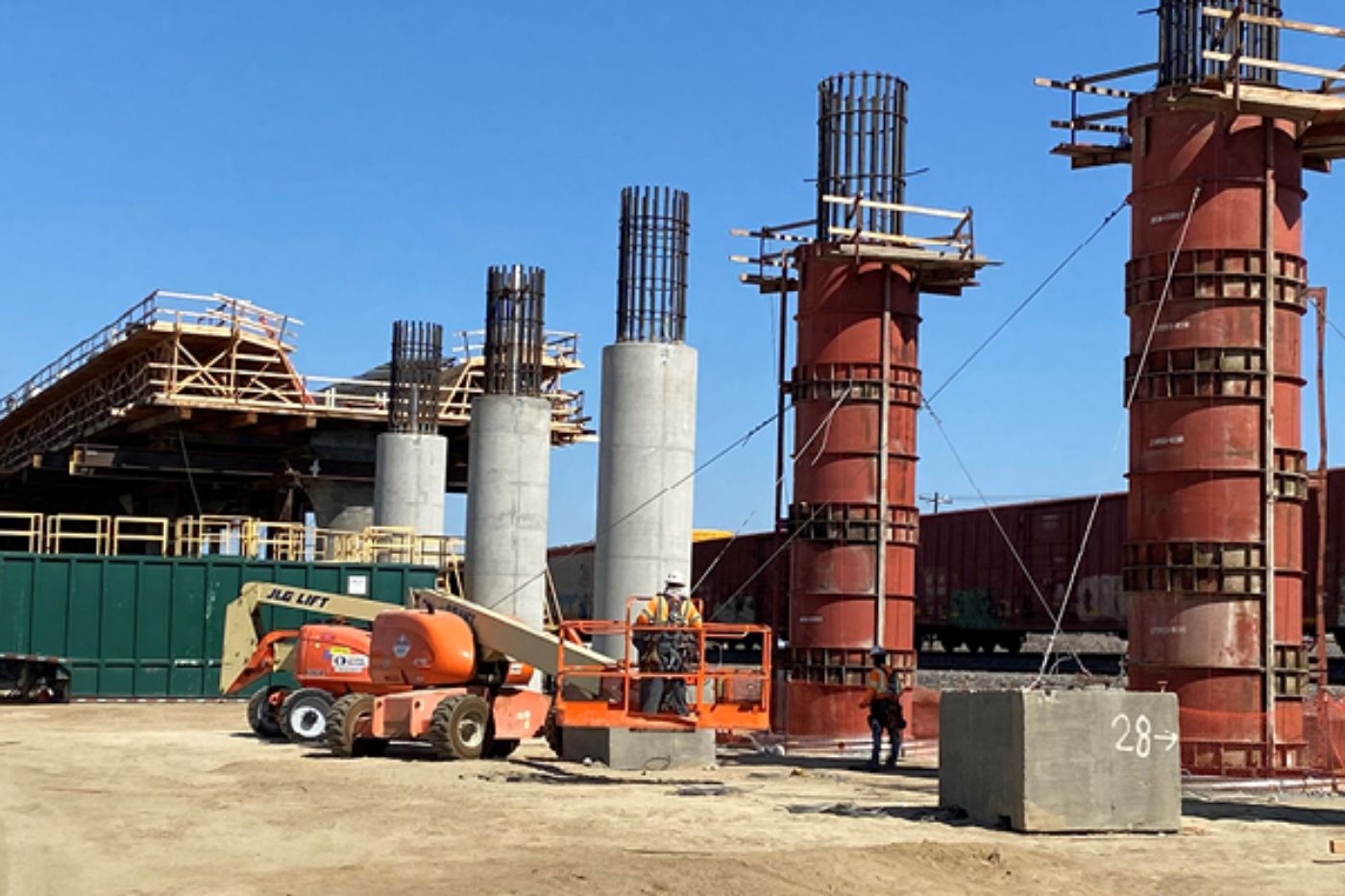
CP 4: Wasco Viaduct
At the Wasco Viaduct, crews continue to set panels on the mechanically stabilized earth (MSE) wall on the north side of the structure. Crews continue to backfill with dirt to form the slopes of the structure. At the top of the northside of the structure, ironworkers are tying rebar to form the box girder section as well as the bent diaphragm and anchors of the superstructure.
At the pergola section, crews recently completed a utility relocation allowing crews to get to work on the center portion of the structure. Crews have placed concrete to form the columns for the center span.
Further south, precast panels continue to be installed to form the deck of the structure. Surveyor crews on top of the overhead portion over the BNSF right-of-way mark the necessary points needed to bring the Wasco Viaduct together. Just below on the edge girder, crews are working on the finishing of the exposed surface.